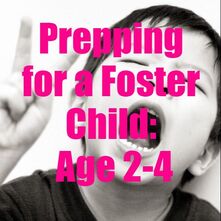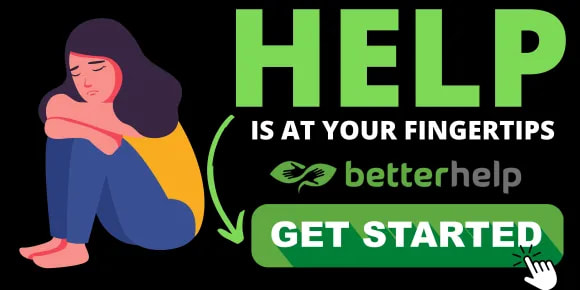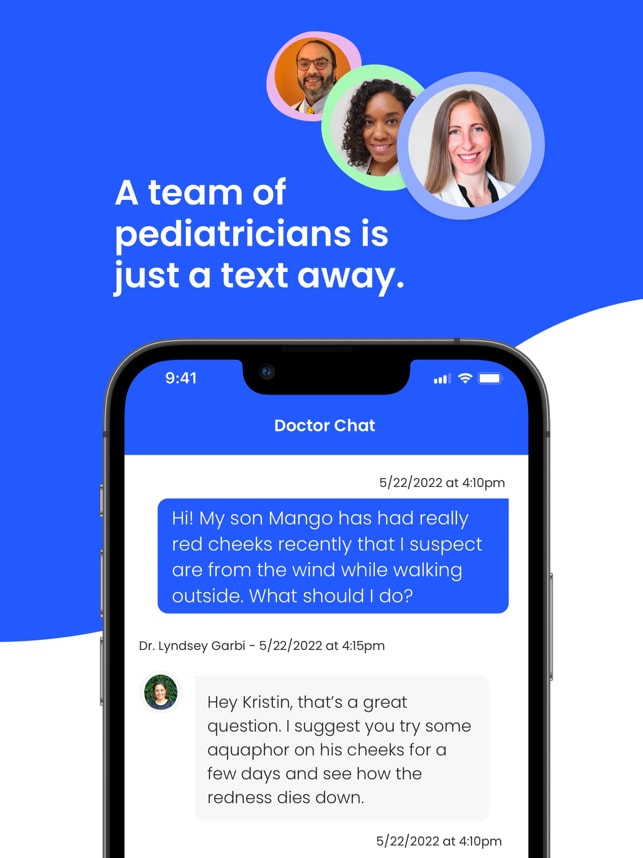 As a foster parent, you may feel a bit overwhelmed when it comes to stocking your foster child’s closet. Most foster kids don’t come to their foster homes with many clothes, so it can be daunting to figure out how to build their wardrobe -- especially when you're already dealing with paperwork, visits, and adjustments. Fortunately, there are several resources available that can help you get the job done without spending a fortune. Here are our top tips for stocking a foster child's closet. Foster Closets One of the best resources for foster families is local foster closets. These organizations provide clothing, toys, books, and other items at no cost to families in need. Some of these organizations will even come directly to your home with donations! You can find out if there is a local foster closet in your area by asking your agency, other foster parents in your community or searching online. Asking Friends and Community Another great way to stock your foster child’s closet is by asking friends and family for donations. Most people are more than willing to help if they know what is needed, so don’t be afraid to reach out and ask! While you can post your request to your followers on social media, you can also post it in local parent groups in your community. Many people have clothes their kids have outgrown stored away that they'd love someone to take off their hands. Thrift Stores Thrift stores are great for kids clothes. You can often find school uniforms, jackets, or other gently used clothes here at a low price. Your kids may even enjoy going to the thrift store and finding items they like. Consignment Stores & Facebook Marketplace You can often find higher quality gently-used clothes at kid consignment stores and Facebook Marketplace. For consignment stores, check out:
Facebook Marketplace also gives you the opportunity to find items for sale in your community. You can easily find large "lots" of clothes in certain sizes. Stocking a foster child's closet can feel like an overwhelming task but it doesn't have to be! While these are all great sources, you will still likely have to buy some items new. Hopefully these suggestions help you fill in gaps as much as possible to stretch your dollars further. From Foster Closets, to asking friends and family members for donations, to thrift and consignment shops, there are plenty of options available that will help you stock your foster child's closet quickly and on budget! Good luck! The teenage years can be difficult for any child, but they can be especially challenging for a foster child. As a foster parent, you may feel unsure of how to connect with your new teen. It is important to remember that as their primary adult in their life, you have the power to make a lasting impact on their lives. Here are some tips on how to build a strong connection with your teenage foster child.
Be Respectful and Understanding It is important to remember that your foster child has likely been through unimaginable trauma in their young lives. Showing them respect and understanding is essential for building trust and creating an atmosphere of safety for them. Be mindful of their boundaries and encourage them to open up when they’re comfortable doing so. When they do share things about themselves or their past, listen actively and take what they say seriously. Validate their feelings when appropriate and remind them that it’s okay not to be okay sometimes. Establish Rules and Expectations Together Rather than setting strict rules about phone/technology use, relationships, chores and curfews prior to their arrival, come up with this list together. Sit down and have a conversation about what their expectations are in these areas; When they differ from yours, explain why other rules may be in their best interest and, as often as possible, come up with a compromise together. Have Fun Together It’s easy to get wrapped up in trying to meet all the challenges facing foster children without taking time out just to enjoy each other’s company. Find activities that you both enjoy such as going on hikes, playing board games, or volunteering together. Use this time together as an opportunity to talk about things outside of school or therapy sessions, like interests they have or more about their personality! These shared experiences will help create memories that will last long after your time as their foster parent has ended. Bonding with a teenage foster child can seem intimidating at first but it doesn’t have to be! By being respectful, setting rules together, and having fun together, you can create a strong bond with your teenage foster child that will benefit both of you during this difficult period. Keep these tips in mind as you embark on this journey together! Good luck!
You’ve made the decision to become a foster parent—congratulations! When you're done with training, the next step is typically your home study. Don’t worry, it’s not as daunting as it sounds. Here are some tips on how to prepare for your home study so you can be ready and confident when the time comes.
1. Gather Required Documents The first step in preparing for your home study is to collect all of the necessary documents and paperwork that will be required during the assessment process. Much of this documentation will likely be gathered in earlier stages of the licensing process. Still, it's a good idea to have core personal records on hand for your home study in case questions related to them come up. These documents may include identification (e.g., driver's license), proof of residence, medical records, background checks, financial records, educational records, employment records, marriage certificates, divorce papers (if applicable), and references from family and friends. 2. Understand What Will Be Covered During Your Home Study Your home study should be an open dialogue with your social worker about what it takes to become a foster parent. They will want to get to know you better so they can make sure you are well-equipped for fostering. Social workers may ask you a wide range of personal questions to get to know you and your household. Some examples include:
Read More Below 3. Create a Safe Environment Your social worker will also be looking at your living environment during their visit for any potential safety concerns—so it pays off to make sure everything is in order before your home study! Your agency may provide you with a checklist that you should go through. However, generally you should:
Preparing for your foster care home study doesn't have to be intimidating; just remember these three simple tips and you'll be ready when they come knocking at your door! With proper documentation ready ahead of time, an understanding of what topics might come up during the assessment process and making sure you have created a safe environment for children—you'll be well prepared for success! Good luck! If you’re a foster parent, you likely already know that sleep can be challenging for a child with trauma. However, there are techniques and strategies you can use to help your child get the rest they need. Let’s take a look at how you can approach sleep "training" for foster kids. Understand the Impact of Trauma on Sleep Habits & Manage Expectations It’s important to understand the ways in which trauma impacts sleep. Children who have experienced trauma may have difficulty falling or staying asleep, or they may wake up multiple times throughout the night. They may also suffer from nightmares or night terrors, leading to further disruption of their sleep cycle. It is essential that foster parents provide an environment that is nurturing and supportive for their children as this allows them to feel safe and secure when sleeping. (This means no "cry it out" for foster kids.) You may want to prepare yourself (and, as needed, your partner) for a newborn-parent sleep pattern the first few weeks after receiving a new foster placement. Establish a Bedtime Routine Creating a consistent bedtime routine can help your foster child relax before bedtime and make it easier for them to drift off to sleep. This could include activities like reading stories together or giving them a warm bath before turning off the lights and getting tucked into bed. Whatever activities you decide on, make sure to keep them consistent each night so that your foster child knows what to expect when it’s time for them to go to bed. Help Them Feel Comfortable in Their Room During the Day It's unlikely a child (with or without trauma) will feel comfortable alone in their room at night if they don't even feel comfortable being alone in their room during the day. After you've begun establishing attachment with your foster child, play together in their room; then, let them know you're going to leave the room to get a drink of water or get something else and you'll be right back. They may need to be reassured and encouraged to continue playing, especially the first few times. Then leave and come back fairly quickly. Do this day-after-day extending the amount time you're gone by a minute each time. This is also a good attachment-building exercise because it lets them know even when you're gone, they can know you're coming back soon. Teach Coping Strategies If your child experiences difficulties getting or staying asleep, it’s important to help them develop coping strategies so they can manage their symptoms during these episodes. For example, teach your child relaxation techniques such as deep breathing or progressive muscle relaxation so they can use them when they feel overwhelmed at night. (For babies and toddlers, you can model deep breathing and massage or compress their arms or legs to encourage relaxation.) For verbal children, you should encourage them to journal or talk about their feelings before starting their bedtime routine; sometimes just articulating their feelings can provide some relief from stressful situations and help them get to sleep easier. Teach Affirmations or Reassuring Mantras My go-to affirmation for my fosters is "You are so safe and loved". I say this to them often, particularly at bedtime and regularly make them say it in first person ("I am so safe and loved"). After a month or so of being with us, they often begin to say it themselves without my prompt. Once they have this down, I let them know, if they're scared or feeling lonely at night, they should say this to themselves while they calm down. Get Help Just as parents of a newborn often ask for help after they bring a baby home, you may want to reach out to your village to see who can provide support. Can someone watch the child so you can get some rest during the day once every few weeks? If you have a partner, can you alternate night shifts so that it doesn't all fall to one person? Remember, you need sleep to be the best foster parent possible, so don't push yourself more than you need to. Talk to Their Doctor Your foster's first medical appointments may not have provided a clear picture on all of their medical needs. If your foster child is still significantly struggling to get and stay asleep after a few months, talk to their doctor and determine if any additional testing or support is needed. Helping your foster child create a healthy sleep pattern requires patience and understanding. Establishing routines, providing emotional support, and teaching coping strategies can help ensure that our kids get enough rest each night so they have the opportunity to be calm and happy kids during the day. With consistent effort, better sleeping habits can soon become second nature! More from FosterMama
Kinship foster care is an important way to provide a safe and loving home for children in need while keeping them connected to family members. If you’re considering becoming a kinship foster parent, here’s what you need to know about kinship foster care.
What is Kinship Care? Kinship care is when a child who cannot live with their biological parents remains in the custody of the state but lives with another relative, such as an aunt or grandparent. The relative can be a blood relation or someone related by marriage or adoption. It provides the child with stability, belonging, and consistency while keeping them connected to their extended family. What Are the Benefits of Kinship Foster Care? Kinship foster care provides several benefits over traditional foster care. For example, it can help maintain connections between the child and their extended family, which can be beneficial for their emotional wellbeing. Additionally, kinship caregivers are often already part of the child’s life—either because they were already involved before or because of existing connections between families—so this can reduce transition times and make it easier for the child to adjust to their new circumstances. What Are the Requirements for Being a Kinship Foster Parent? Each state will have different requirements for being a kinship foster parent, so it’s important to research your local regulations before making any commitments. Generally speaking though, you must go through all of the usual checks that are required for any other type of foster parent (such as background checks) but you may also have additional obligations depending on your specific situation—for example, if you are not related by blood then there may be certain paperwork that needs to be filled out first. How is Kinship Foster Care Similar to Traditional Foster Care? Kinship foster parents share much in common with traditional (non-related) foster parents. Kinship Foster Parents should expect:
What unique challenges do Kinship Foster Parents face? Kinship fostering does come with its own set of challenges as well—especially when it comes to financial issues. For example, some states may not provide financial assistance for relatives taking on the role of caregiver even though non-relative caregivers would receive assistance. In some states, this does change if the kinship foster parent because licensed (talk to the child's social worker about that possibility). Another issue kinship foster parents face is more personal; Because kinship foster parents are known to the child's biological parents, it may mean resentment and anger amongst family members involved in the case. These circumstances should be dealt with maturely and delicately to the child doesn't feel they're in the middle of this tension. While challenging, kinship fostering can be incredibly rewarding both for the kinship parents and for children in need of a stable home environment. If you you've been asked to serve as a kinship foster placement and think it would suit you and your family, talk to the child's CPS worker to see how to move forward. |
AuthorI'm a foster mom, bio mom, working mom, special needs mom, busy mom. I'm also married to my high school sweetheart, I'm a proud 23-year childhood cancer survivor, and I'm passionate about serving my community. More from FosterMamaArchives
March 2023
Categories
All
|






 RSS Feed
RSS Feed